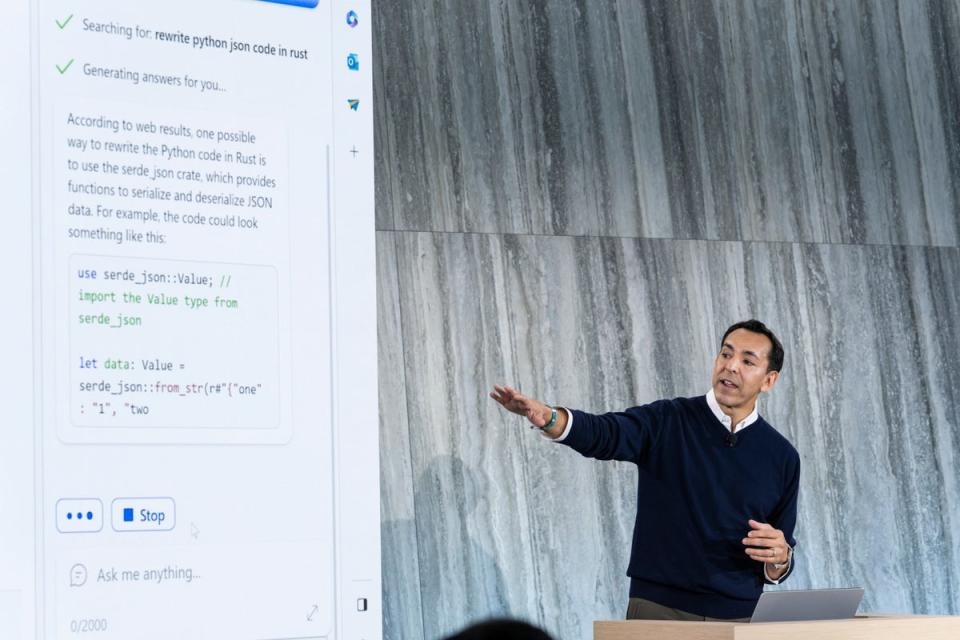Microsoft lets everyone use its controversial Bing chatbot – and adds new capabilities

Microsoft has rolled out its ChatGPT-powered Bing chatbot to the world, as well as adding a range of other features.
The new version of Bing was rolled out three months ago, when Microsoft announced that users would be able to chat with the search engine in the hope of finding better results.
The performance of that chatbot has helped propel Microsoft and its often mocked Bing search engine to prominence, with many speculating that it could be the moment that it takes over from rival Google.
But it has also led to worries, especially when the chatbot began sending dramatic and unhinged messages to its users.
Microsoft said that since the feature was first unveiled, in a limited test, customers have engaged “in over a half a billion chats”. People have created 200 million images, Bing now has more than 100 million daily active users and installations of the app are up by four times.
Now Microsoft is ready to allow everyone to talk to Bing, moving it out of the “limited preview” that it had previously been in and removing the need to be part of a waitlist. The new chatbot is still officially in “open preview”, but anyone can use it.
At the same time, Microsoft said it was adding new capabilities to the system. They include adding more visual answers with image and video, as well as allowing the chatbot to remember previous conversations and use that history in its answers.
The new Bing will also operate as a platform, so that developers can build new software that interacts with it. OpenAI’s ChatGPT – which runs as a separate app as well as powering Bing’s own chatbot – already has those tools, with companies adding the options to book holidays and more by chatting to it.
Microsoft will also add new export and share functionalities into the system “soon”, it said. That can be used to share conversation with others on social media, it noted – something that happened in large numbers when users realised it was possible to antagonise the chatbot into seeming as if it was having a breakdown.
Other improvements are coming in the future, Microsoft said. They include better summarising of long documents, as well as Edge actions so that the browser can start other activities.
Microsoft’s announcement came amid increasing concern about generative AI technologies such as the new Bing, ChatGPT and image creators such as Dall-E. It said that its preview of the system was part of what it believes to be a responsible approach to such concerns.
“But we don’t stop there,” it said. “Together with our partners at OpenAI, we’ve continued to implement safeguards to defend against harmful content based on what we’re learning and seeing in preview.
“Our teams continue to work to address issues such as misinformation and disinformation, content blocking, data safety and preventing the promotion of harmful or discriminatory content in line with our AI principles.”

 Yahoo Finance
Yahoo Finance 